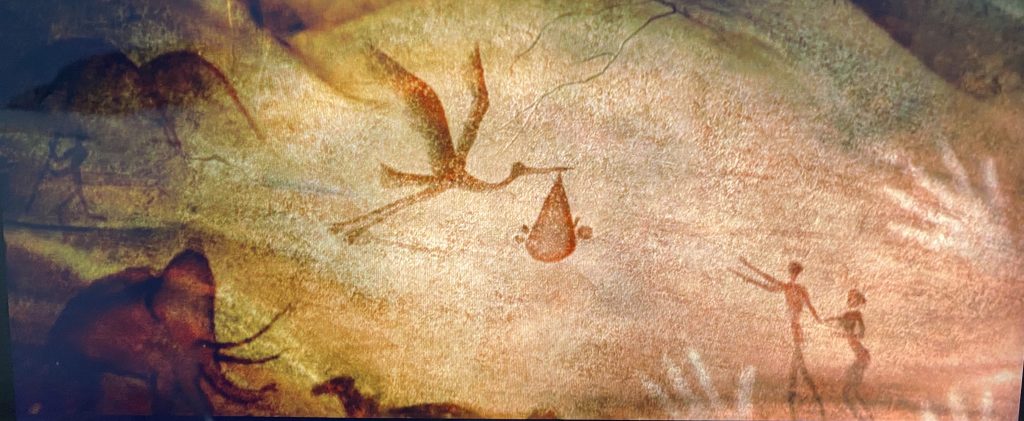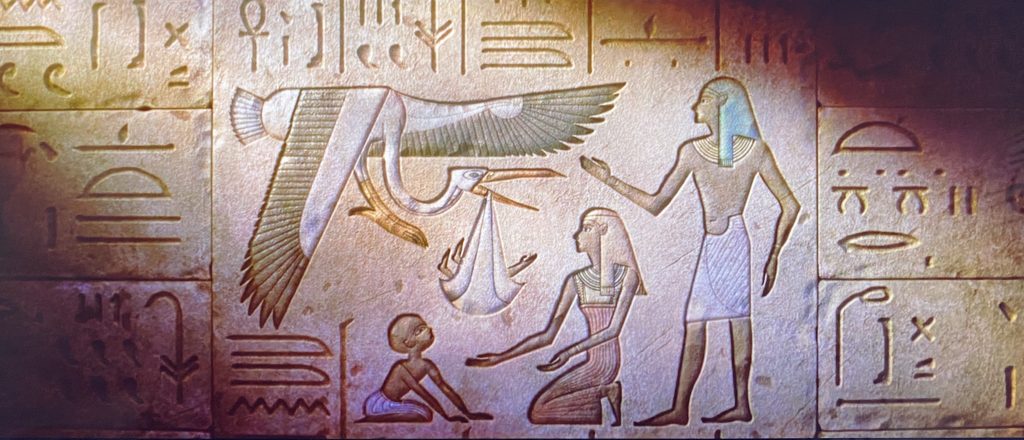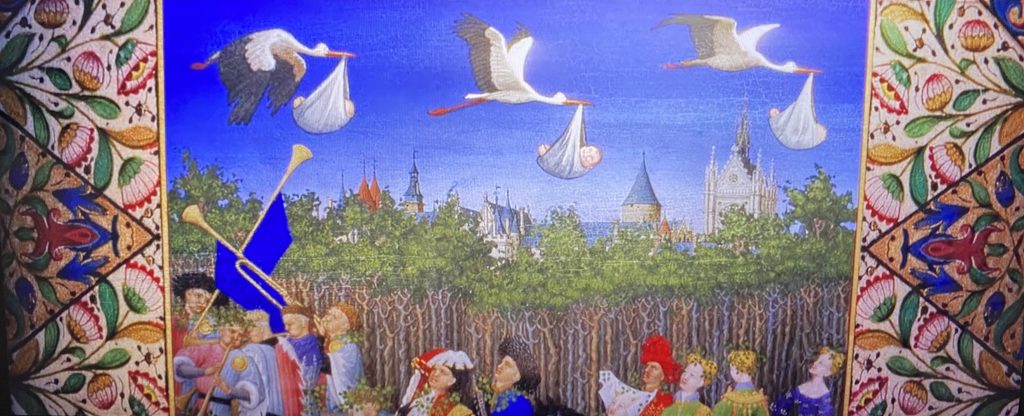Anthropomorphism and stereotypes are often utilized in children’s animation since they cater to a broad audience. The film Storks uses anthropomorphic animals in order to create vivid and lively characters with human characteristics whom the audience can relate to. Moreover, integrating well-known stereotypes in the storyline can evoke empathy or disdain for real animals, such as the depictions of the stork and the wolf in this film.
The opening sequence of the film starts with a voiceover of stork, Junior, who describes his former job as a baby-delivering stork. As he reminisces the joys of delivering babies in the past, he affirms the image of a long-legged, long-necked bird with a bundle of cloth dangling from its beak. The association that storks deliver babies is a popular folklore all around the globe. The origin of this myth is difficult to trace. However, historians seem to agree that it first started in northern Europe and spread from there. In Victorian England, for example, the myth was used to explain the cycle of life [1]. Nowadays, it is a common theme in children’s animation to visualize the storks as the bringers of life.
Stereotypes are not only employed in the visualization of storks but also in the portrayal of wolves. During their journey, Tulip and Junior come across a pack of wolves which growlingly approach them. In the cave, the wolves fight about devouring the baby. Thus, the wolf pack is presented as a threat that acts on their animalistic instinct. This presents them as entirely unhuman and lacking in emotion and reason – their animal instincts make them focus solely on viewing the baby as food. Nevertheless, the baby is able to evoke feelings of love and admiration. Their reaction to the baby giggling is the complete opposite to their tough demeanour and their reputation as “big bad wolves” (Image 1 and 2) On one hand, this challenges stereotypes and the animal discourse of wolves. However, due to the comedy genre of this film, this may simply serve as a comedy moment; playing on the accepted stereotype of wolves to provide comic relief. The art style allowing the wolf’s whole demeanour and appearance to soften indicates this – the wolf almost becomes an entirely different animal.
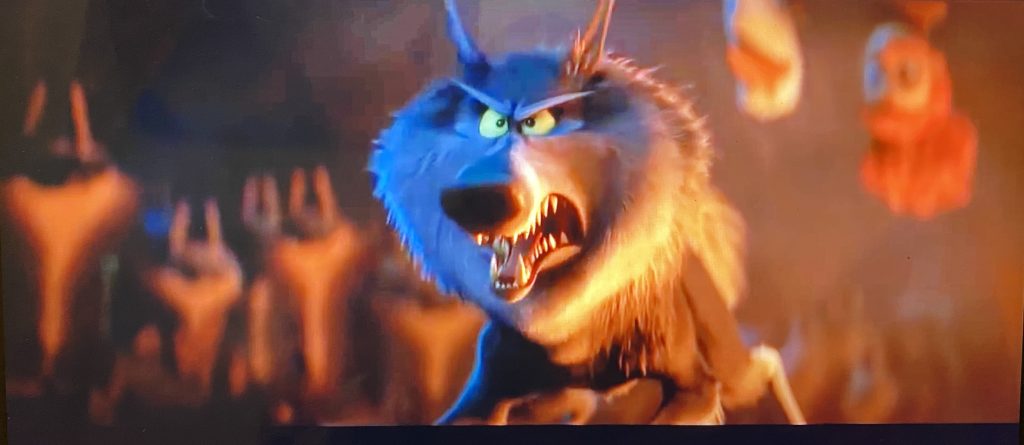
Image 1: The big bad wolf 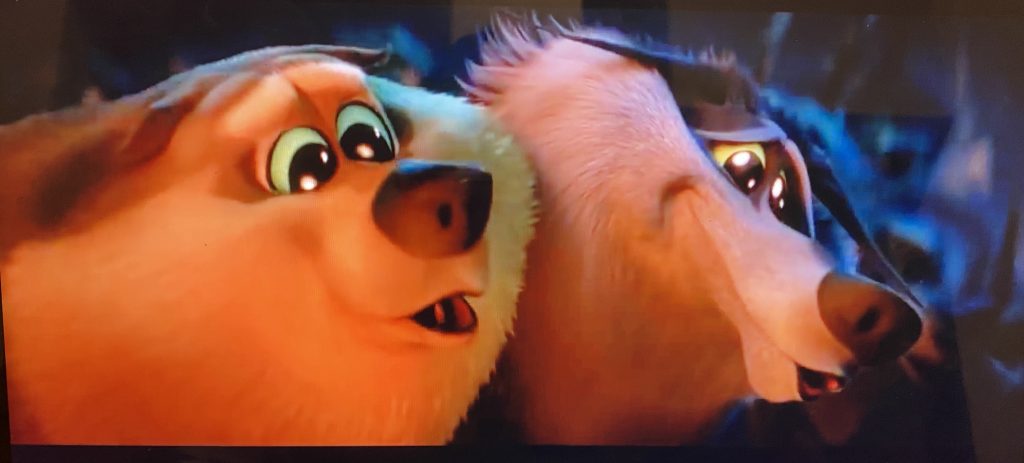
Image 2: puppy-eyed wolves
As the story develops, the audience discovers that the storks were forced to rebrand after a botched delivery. Instead of delivering babies, they deliver telecommunication devices from a gigantic online store, Cornerstore.com, which is located in the mountains. There are many parallels to the human world. One of them is that the storks work for a multicorporate enterprise which resembles Amazon (Image 3). The film offers a critique on the contemporary consumer capitalism and the internet-enabled consumerism by taking a common and recognizable folklore about storks. Moreover, the film criticises the mercilessness of corporate culture. The boss, Hunter, cajoles Junior to fire Tulip, the only human in the company due to the fact that she negatively impacts the company’s profit (Image 4). Junior finds himself in a position where he has to consider whether to fire the orphaned girl in order to become boss or to be compassionate and let her stay. The storks personify employees and employers in a multicorporate enterprise who are asked to make serious decisions. The film makers utilize animals and incorporate generic jokes which speak to children but contain underlining messages and jokes for adult viewers.
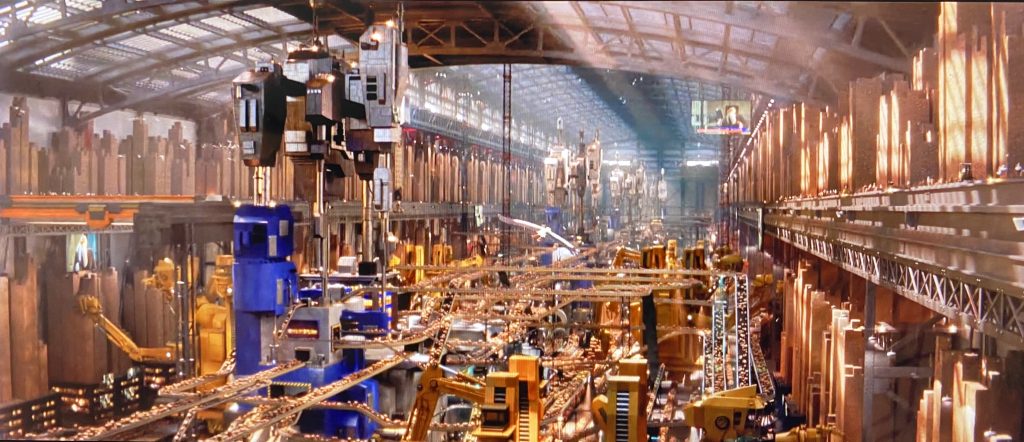
Image 3: Inside Cornerstore.com 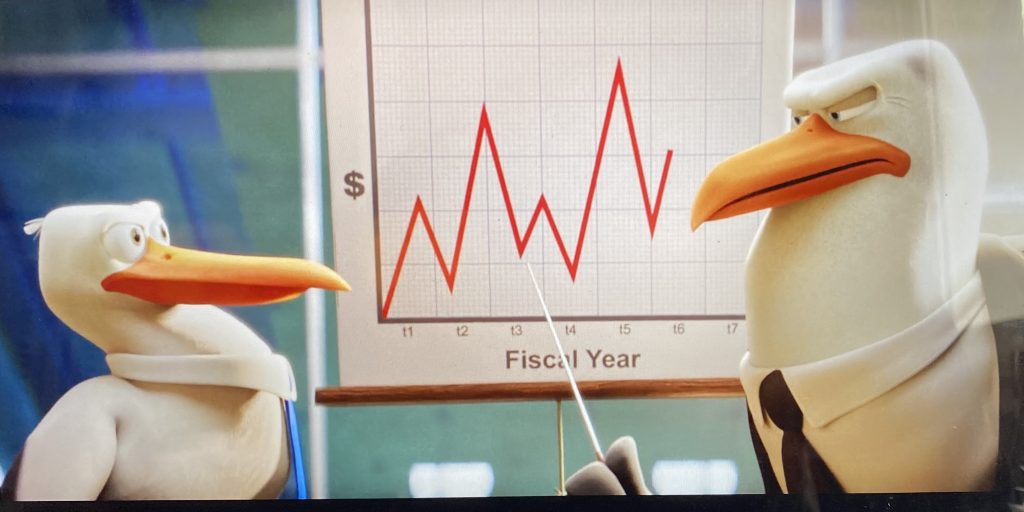
Image 4: Profit Chart
Anthropomorphic animals build a foundation to tell a story and hint at social criticism. Further, the implementation and reinforcement of stereotypes is an important element of children’s animation. Nevertheless, the audience should be aware of damaging stereotypes. For example, the antagonistic “big bad wolf” is a reoccurring stereotype in popular culture and media. They are presented as savage and as a threat for human beings. Enforcing these stereotypes in films is dangerous and unjust. They enter our subconscious mind and lead to an internalization of false assumptions.
Reference List
[1] Bryce, Emma, What’s Behind the Myth That Storks Deliver Babies? (2018) <https://www.livescience.com/62807-why-storks-baby-myth.html> [accessed 16 January 2021]
Bibliography
Bryce, Emma, What’s Behind the Myth That Storks Deliver Babies? (2018) <https://www.livescience.com/62807-why-storks-baby-myth.html> [accessed 16 January 2021]
